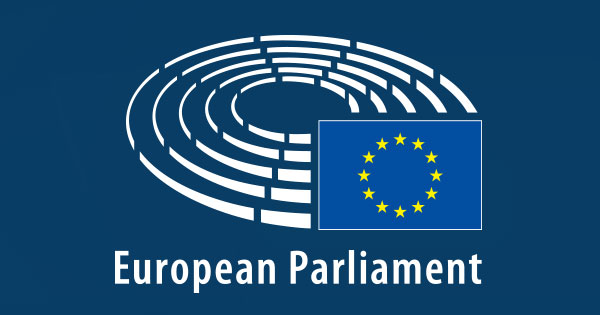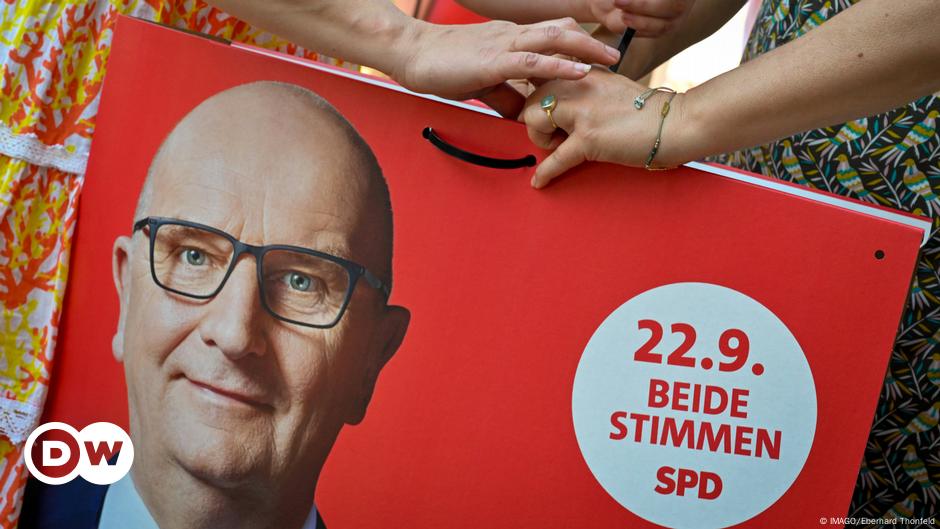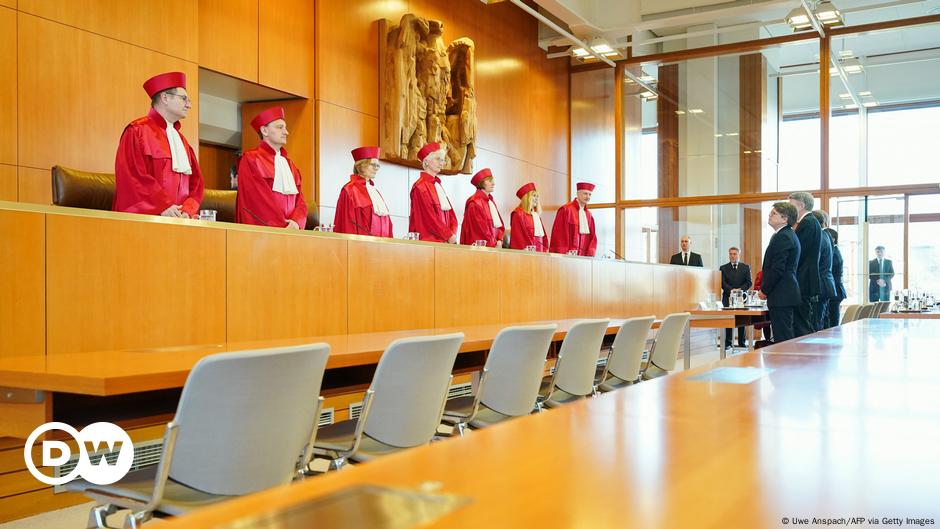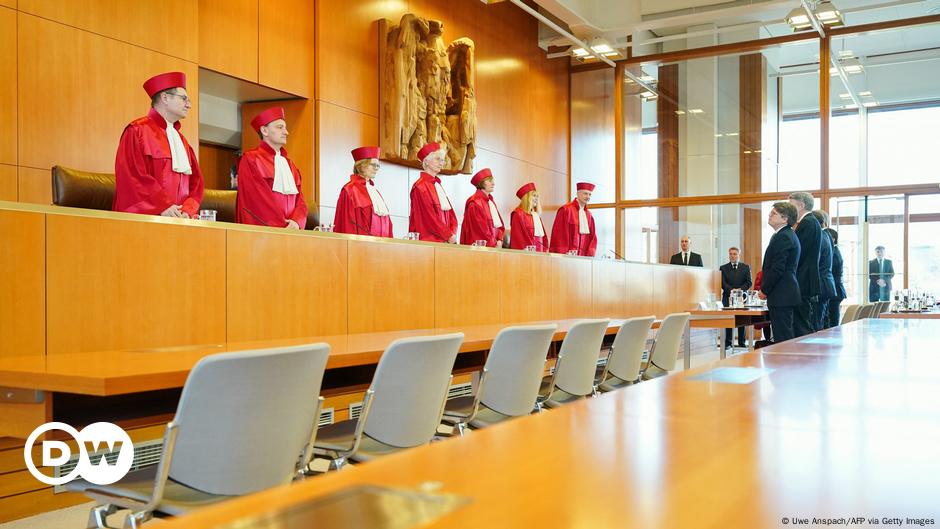- 13 Posts
- 57 Comments

 151·7 days ago
151·7 days agopublished: 10.16.24
The article is almost a month old.

 3·9 days ago
3·9 days agoEventually, yes. But we are not quite there yet. In January Scholz will face a vote of no confidence, which he is unlikely to win. At this point all parties may try to find new governing majorities within the current makeup of the Bundestag, our parliament. This is also extremely unlikely to succeed (not with only a few months left in the term anyway). And then a snap election is called

 3·10 days ago
3·10 days agoSure, but he didn’t advocate for a boycott, he talked about “going sailing” a.k.a. piracy

 95·10 days ago
95·10 days agoAnd that will improve the quality of the games how?

 6·18 days ago
6·18 days agoIt’s a term that goes back to the cold war. There was a strike and the Soviet Union ended it violently by rolling tanks into the city. This put communists all over the world into a bit of a dilemma: on one side of the conflict was the working class making their opinion known (a communist value) and on the other the Soviet Union (the good guys). So whose side should they take?
It was British communists who coined the term “tankie” for those who defended the SUs actions to brand them as “fake communists” who are more interested in identity politics (the good guys did it, therefore it’s OK) than the plight of the working class.

 12·28 days ago
12·28 days agoThe best part of the blogpost: They are going to invest even more next year.
Last week, the budget committee of the Bundestag decided to increase the Sovereign Tech Fund’s allocation by €4 million for next year. We’re honored and thankful for the German Parliament’s recognition of the importance of open source technologies, and for their continued trust in our work.

 483·1 month ago
483·1 month agoThis is your friendly reminder, that the Stop Kiling Games campaign is still running. I haven’t been posting updates for a while, because progress has slowed considerably over the last month and there hasn’t been anything to write about. But it feels relevant here.
(Campaign only running in select jurisdictions, the US is not one if them)

 9·2 months ago
9·2 months agoI have my non english language content seperated in a different library. This allows you to set the language of the meta data to German so you get German episode titles and descriptions. Downside is that the two versions won’t be showing up in the same list (at least not on the web. Some clients might combine libraries)

 13·2 months ago
13·2 months agoIt’s worse than that. The numbers I originally posted was only the exit poll. Now we have a preliminary result and it’s not looking good.
Here are the results:

Parties with less than 5% of the vote share don’t get any seats (there are exceptions but these don’t apply here, resulting in this makeup of state parliament:

You need 45 seats to have a governing majority. SPD and CDU together have only 44. There is no majority without either the fascists from the AFD or the tankies from the BSW.

 2·2 months ago
2·2 months agoHe’ll, even an Intel based thin client would probably be enough. You can get them on eBay for like 30 bucks, which is about as much as a pi costs. You’ll probably have to replace the ssd though. That’ll set you back an additional 30 bucks.

 5·2 months ago
5·2 months agoThere is BigBlueButton. It’s more focused in educational usecases (online classes and the like) but it works just fine for everything else. You need to host it yourself, but there are hosted instances out there. I for example use senfcall.
But I think we are talking about different things here. What Chanuk was talking about (I think) is a ms-teams or slack alternative, not a zoom or oracle WebEx alternative. Basically Discord but for business. Sidenote: there is a open source Discord clone called revolt
I would probably go with bluefin. KDE is great, I myself use aurora on one of my devices, but it can also be kinda fiddley with all of it’s options.
The user has never even used a PC and therefore won’t profit from the familiarity that KDE’s default desktop layout provides. Gnome on the other hand offers a more simplified experience with few options and big icons. All of that might be an asset here. You can use menulibre to hide menu entries from the menu and use the official documentation to remove command line access: https://help.gnome.org/admin/system-admin-guide/stable/lockdown-single-app-mode.html.en
Plus it’s still atomic which I actually think is helpful here. For once all the important system stuff is read only. Secondly if one manages to screw something up you can just rebase.

 12·2 months ago
12·2 months ago I can’t find it
I can’t find it(Exploration: I’m using thunder, which is gesture based, you swipe to upvote rather than pressing a button)

 10·2 months ago
10·2 months agoThat they leased

 15·2 months ago
15·2 months agoWould they be mandated to give out the server code that people could run their own servers?
Sort of. The Idea is that people should be able to run their own servers, but developers wouldn’t need to give out their code. All you need is the server binary. After all server software is just that software, just like the client and they don’t need to give out the source code for that for you to run the game. Alternatively they could patch the game so it’s peer-to-peer. (and yes in this case that would be unreasonable as the game is not successful enough to even break even)
The initiative is so ambiguous (to the extend that it is - I’d argue that it’s a lot clearer than many people claim) because it’s not actually legal text. It’s not supposed to be. All it should do is describe the problem and explain why the problem falls under EU jurisdiction. Everything else is supposed to be handled by EU lawmakers after the initiative has met it’s signature goal.

 1·2 months ago
1·2 months agoI’m remembered of this video essay: Games, Schools, and Worlds Designed for Violence

 9·2 months ago
9·2 months agoThere is another downside. The local and global feeds are potent discovery tools. But they only work if you group people with similar interests onto the same instance. Your proposal assumes a certain amount of homogeneity. If everyone is interested in the same content anyway then yes you can distribute it randomly. But all the people interested in Linux memes are already here. If we are to expand our reach we need to have instances catering to other interests.
And it also doesn’t work with international communities. German speakers for example go to feddit.org, precisely because that’s where German content is going to be amplified via the local feed and therefore easier to discover (for people an that particular instance)
I considered that. Unfortunately silverblue doesn’t do live systems and aurora therefore doesn’t either. So a VM is the only way of trying it out. OP stated that they have someone to help with the actual installation so I left the whole create install medium for bare metal install out intentionally since I assume this person will be capable of helping with that.
Also small Markdown help: If you use dashes lemmy will automatically format bulletpoints correctly. You can’t use •s for it. Doesn’t take anything away from your comment, etcher is still the best tool to create a bootable usb drive, but for the future consider using dashes.
You can try Linux out without installing it to get a feel for it before you make the jump. Set a weekend aside (or at least a couple of hours) to test drive a Linux distro and check if it is your cup of tea.
This is one way of doing this:
- Install Virtual Box on your (Widows) PC
- head over to https://getaurora.dev/ and download the latest iso
- In virtualbox create a new VM
- set the OS Type to fedora (64 bit)
- after that you can keep all the standard settings, just be aware that performance is not going to be representative of an actual install
- Then select the newly created VM and open the settings panel
- here you go to “Storage” and click on the slot under “Controler: IDE” labeled “empty”
- click on the CD symbol on the right side of the window, in line with “optical drive” and select “choose a disk file”
- pick the iso file you downloaded in step 2
- close the settings window and start the VM
- go through the installation wizard to install Aurora OS in your Virtual Machine
- Profit
I know that these instructions can seem daunting but it is easier than it reads, I promise.
Why Aurora OS
Aurora OS is based on Fedora Silverblue meaning that it is what is known as a immutable distro. That in turn means that it’s harder to mess stuff up and break your install. It also means that some things are harder to achieve. But I also think that you are probably not interested in the hard stuff anyway.
Aurora uses the KDE Plasma Desktop, the same desktop used by Valve on the Steamdeck. It has a familiar Windows like layout by default but also allows you to customise it like crazy to fit your particular need (whatever that may be).
Aurora flatpak as it’s app format. To see what kind of software is available for this distro you can check flathub.org . It’s not going to be as much software as Linux Mint for example (Mint uses flatpak and deb), but everything the average user needs should be there.













I’ve added some qoutes from the article